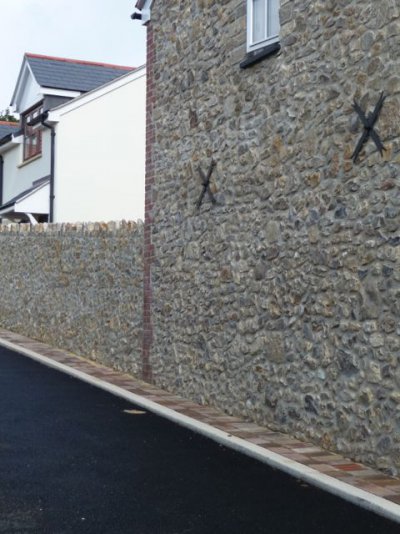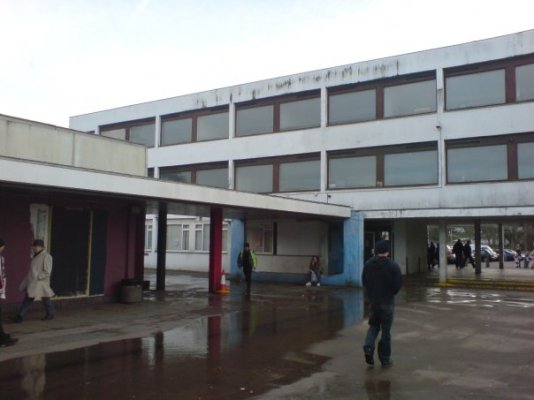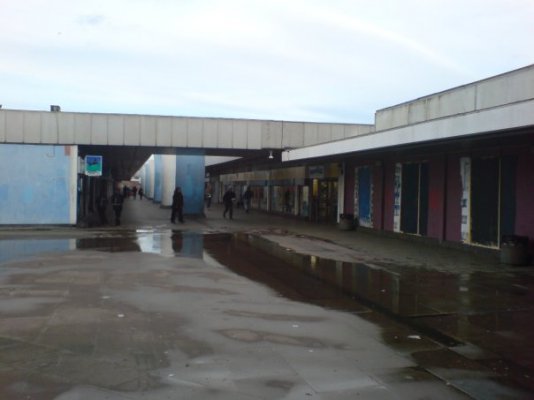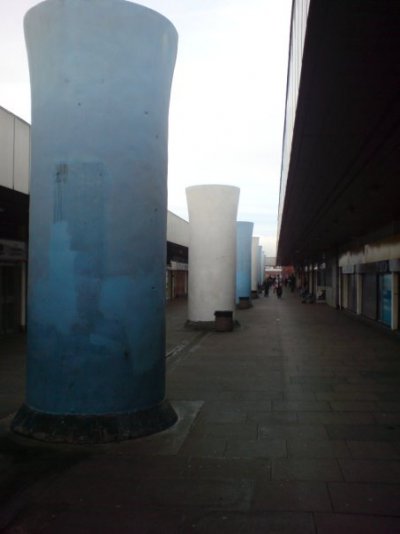You are using an out of date browser. It may not display this or other websites correctly.
You should upgrade or use an alternative browser.
You should upgrade or use an alternative browser.
A Property is Considered Period when.....
- Thread starter Christine
- Start date
MatthewC
Member
- Messages
- 1,744
- Location
- Central/South England
Interesting question. Pre-Victorian certainly; Victorian I would think so; pre WWII, quite possibly. It could mean "anything built in traditional techniques" (i.e., lime, breathable etc).
Mind you, "proper period property" could have a slightly odd meaning: is there such a thing as an "improper period property"?!
Mind you, "proper period property" could have a slightly odd meaning: is there such a thing as an "improper period property"?!
plasticpigeon
Member
- Messages
- 2,462
- Location
- Birmingham
I'd have thought anything that is distinctively of its time, but probably pre WW2 is what appeals on this forum.
malcolm
& Clementine the cat
- Messages
- 1,849
- Location
- Bedfordshire
Mine is an improper period property. It's from lots of different periods which annoys the conservation brigade. They only like the garden wall.
The Haynes book of Period Property (much better than it sounds) defines period property as having solid wall construction made from natural materials such as brick, wood or stone. They are making the definition for maintenance purposes but sounds as fair as any other definition.
The Haynes book of Period Property (much better than it sounds) defines period property as having solid wall construction made from natural materials such as brick, wood or stone. They are making the definition for maintenance purposes but sounds as fair as any other definition.
Flyfisher
Member
- Messages
- 10,289
- Location
- Norfolk, UK
I was going with PP's answer until malcom pointed out that property can span many periods and styles. Hmm. I think I'll stick with PP's definition but expand it to allow properties that span different periods, otherwise I'll have refer to ours as a 'mongrel' property rather than a period one - which doesn't have quite the same ring to it. :lol:
I suspect a less informed definition would just be 'old' and, in this context, PP's suggested cut-off date of around WW2 seems as good a definition of 'old' and any other.
But I loved the way the question was posed here: http://answers.yahoo.com/question/index?qid=20110821090808AAoNk1Z :lol:
I suspect a less informed definition would just be 'old' and, in this context, PP's suggested cut-off date of around WW2 seems as good a definition of 'old' and any other.
But I loved the way the question was posed here: http://answers.yahoo.com/question/index?qid=20110821090808AAoNk1Z :lol:
malcolm
& Clementine the cat
- Messages
- 1,849
- Location
- Bedfordshire
It's similar to the debate about what is a classic car. (That is a funny debate mostly enjoyed by people with MGs who like to think their cars are more classic than others from the same period.) The accepted answer now is very different from what it was 20 years ago.
Any strict definition for property now will be different from any definition 100 years in the future. Some1950s buildings like Churchill College in Cambridge are most definitely period if not especially fashionable at the moment. The brand new houses in our village are period. We are going through a very distinctive period at the moment - you can date houses built over the last 30 years much more accurately than 17th century buildings so if anything the new ones might be more period.
Mine has real Tudor walls completely hidden on the inside and out by fake Tudor. All of a period. I'll stop digging the hole now - don't know where I'm going with this.
Any strict definition for property now will be different from any definition 100 years in the future. Some1950s buildings like Churchill College in Cambridge are most definitely period if not especially fashionable at the moment. The brand new houses in our village are period. We are going through a very distinctive period at the moment - you can date houses built over the last 30 years much more accurately than 17th century buildings so if anything the new ones might be more period.
Mine has real Tudor walls completely hidden on the inside and out by fake Tudor. All of a period. I'll stop digging the hole now - don't know where I'm going with this.
paulb33
Member
- Messages
- 582
- Location
- Penarth, Vale of Glamorgan
malcolm said:Mine has real Tudor walls completely hidden on the inside and out by fake Tudor.
:lol:
DJH
Member
- Messages
- 1,532
- Location
- Co Tipperary Ireland
When it's old... 
Doug
Doug
vicky whitworth
Member
- Messages
- 632
- Location
- East Devon
When it is so dodgy structurally that it's held together with tie bars. Like this one just built in our village - Period 2013! These are faux tie bars because the developer promised to build the 'cottages' in keeping with the rest of the village. This was our last open field in the village, centre of the conservation area and next to three listed properties.
Attachments
Flyfisher
Member
- Messages
- 10,289
- Location
- Norfolk, UK
Interesting points. If we're going for 'of their time' as a definition then there are few properties than more iconic of their period than these:
Thanks guys!
This is a real eye-opener. Age vs Style! I was expecting you to tell me a date, perhaps pre-1850 is considered period. Not that a brand-new property built in the style of an old property, or a 1938 brick built semi could both be considered a period property.
Why I asked, is that we are developing a website to list all the properties in the UK awaiting auction.
One of our property classifications is 'Period Property', designed to show all the period properties awaiting auction in the UK. So what is a period property? We need to know!
Currently our algorithms identify any properties where the auctioneer property description contains phrases like:
listed building, listed property, Grade I, Grade II, Grade B, Grade C, Category A, Category B, Category C, Palladian, period cottage, period farmhouse, period house, period property, period town house, period church, seventeenth, sixteenth, sixteenth century, thatch, vaulted ceilings, dating from 17, dating from 16, dating from 15, dating from 14, period building, original wooden beams, historic, etc, etc.
After the algorithms have identified a potential period property candidate, a human checks to see if the image of the property looks pre-Victorian. If it does then it is classified as a ‘Period Property’!
Is this an OK way to indentify period property, that would meet most people's expectations of what a period property is?
This is a real eye-opener. Age vs Style! I was expecting you to tell me a date, perhaps pre-1850 is considered period. Not that a brand-new property built in the style of an old property, or a 1938 brick built semi could both be considered a period property.
Why I asked, is that we are developing a website to list all the properties in the UK awaiting auction.
One of our property classifications is 'Period Property', designed to show all the period properties awaiting auction in the UK. So what is a period property? We need to know!
Currently our algorithms identify any properties where the auctioneer property description contains phrases like:
listed building, listed property, Grade I, Grade II, Grade B, Grade C, Category A, Category B, Category C, Palladian, period cottage, period farmhouse, period house, period property, period town house, period church, seventeenth, sixteenth, sixteenth century, thatch, vaulted ceilings, dating from 17, dating from 16, dating from 15, dating from 14, period building, original wooden beams, historic, etc, etc.
After the algorithms have identified a potential period property candidate, a human checks to see if the image of the property looks pre-Victorian. If it does then it is classified as a ‘Period Property’!
Is this an OK way to indentify period property, that would meet most people's expectations of what a period property is?
88v8
Member
- Messages
- 3,129
- Location
- Glorious Gloucs
Come, gentle bombs, and fall on Brooke House, Basildon. :?
Ivor
Ivor
88v8 said:Come, gentle bombs, and fall on Brooke House, Basildon. :?
Ivor
Well for the residents come nightful that may well be the impression.
jocelyn plummer
Member
- Messages
- 2,297
- Location
- North Norfolk
There is really a definitive line between 'listed' and 'period' properties. To me a period property is pre 1900, whether listed or not , it then becomes a character property; Listing is given to properties of special note, significance and importance within their setting, so, sometimes, a modern building gets listed!! In our Market Town we have a 1950 building which has been given listed status as it was designed by Sir Albert Richardson. The building narrowly escaped demolition a few years ago when its owner, the District Council, decided to relocate. The local Town Council managed to get it listed.
plasticpigeon
Member
- Messages
- 2,462
- Location
- Birmingham
I think that for your definition you want to know what kind of property someone interested in buying a period property would look for. I think that has more to do with how much of the original fabric is left and not just the age. I will stick my neck out and say anything pre 1850 would be considered very interesting by someone looking for a period property, as would anything up to the second world war so long as it maintains much of the original fabric. There are thousands of once lovely Victorian properties that hold no interest to those interested in period as none of what makes them Victorian is left. Also dilapidated but original is far more interesting to us lot than a property renovated to within in inch if it's life. How is this for shite architecture, also in Basildon. I took these when I went for an interview down there. It is worth visiting because it is so bad.
Attachments
Flyfisher
Member
- Messages
- 10,289
- Location
- Norfolk, UK
I've never been to Basildon but I think I've now seen enough of it. 
By way of contrast, I wonder if this would be considered a period property, should it ever be completed?
http://www.ajbrowne.com/html/hx.html#
By way of contrast, I wonder if this would be considered a period property, should it ever be completed?
http://www.ajbrowne.com/html/hx.html#
DJH
Member
- Messages
- 1,532
- Location
- Co Tipperary Ireland
A property is considered Period when assigned to the (architectural) period it was constructed... 
Doug
Doug





